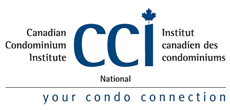Part 42 published on 01/05/13
Board had the right to make changes as part of repair and maintenance
Elgin Condominium Corporation No. 3 is a 51-unit townhouse-style condominium, with “roof-decks” above the garages. 15 years after the original construction, the roof-decks were failing and leaking, due to “extensive construction design and implementation flaws”. The corporation’s engineers recommended that the roof-decks be replaced, and offered two options:
Option 1: New wooden decks and railings (ie. replacing the original wood elements with similar wood elements).
Option 2: Vinyl decks, coupled with aluminum railings.
The engineers recommended Option 2, primarily because Option 2 would be less costly and because vinyl decks and aluminum railings could be more easily serviced and maintained.
The Board held meetings of the owners to discuss the two options, and even held an ordinary vote of the owners (respecting the two options). Out of 24 voting owners, 20 voted in favour of Option 2. The Board then chose Option 2, and levied the necessary special assessments (in the amount of $10,000 per unit) to proceed with the work.
One of the owners, Mr. Harvey, objected strenuously to the proposed work and ultimately sued the condominium corporation. Among other things, Mr. Harvey said that the project constituted a substantial change to the common elements, requiring a two-thirds vote of the owners (because the costs of the roof-deck replacement would greatly exceed 10% of the corporation’s annual budget). He asked for an order that the work stop and that all special assessments be reversed.
The Court dismissed Mr. Harvey’s claim. The Court said that the project, and the levying of the special assessments, fell within the Board’s mandate. The Court said that no vote of the owners was in fact required. The Court said that the Board had the right and the obligation to arrange for replacement of old, defective or worn-out common elements with new, improved or upgraded material, equipment or designs (in keeping with evolving construction knowledge and methods) “even when the result has a different, more contemporary, aesthetic appearance”.
